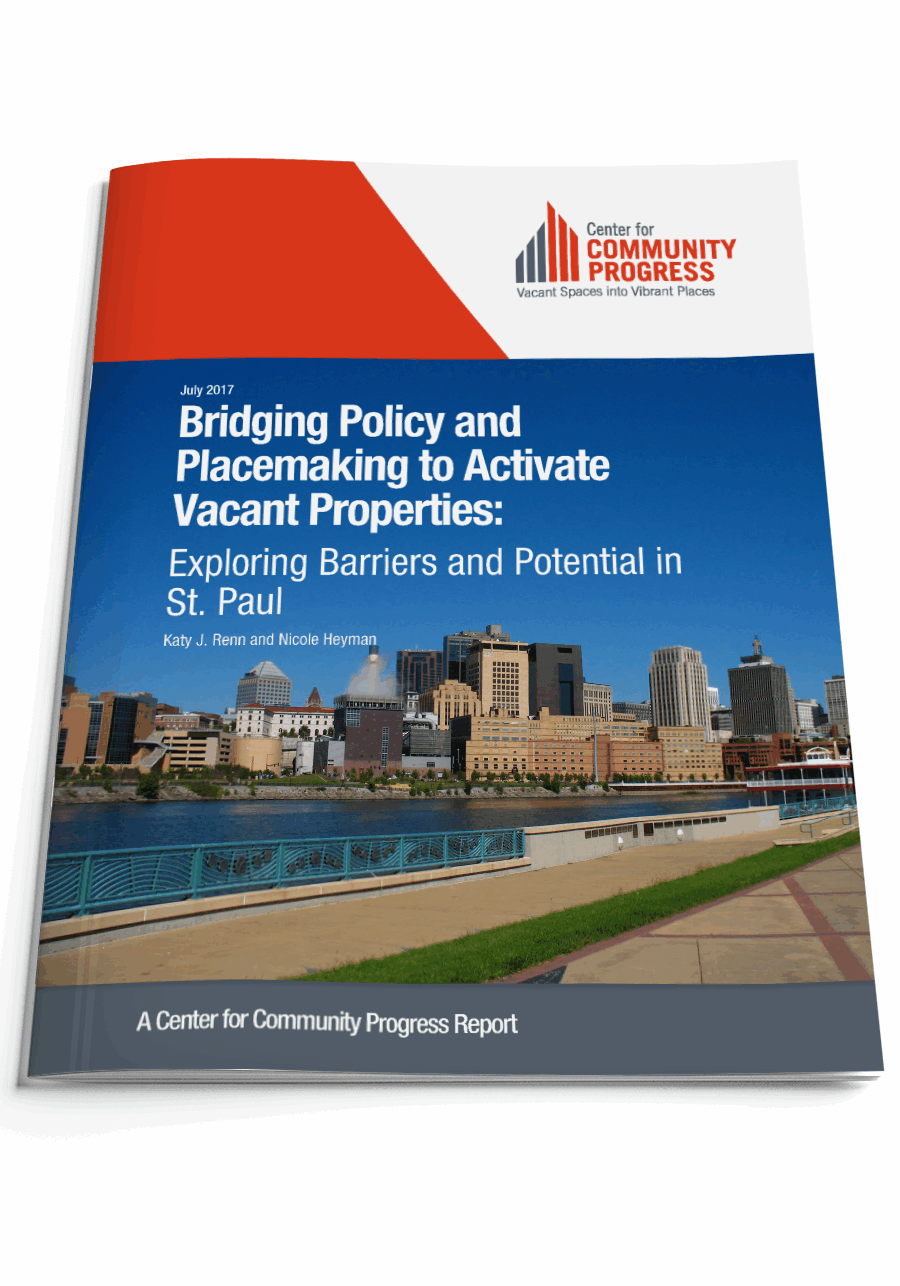Bridging Policy and Placemaking to Activate Vacant Properties
Exploring Barriers and Potential in St. Paul
Topic(s): Creative Placemaking, Local Analysis
Published: July 2017
Geography: Minnesota
Author(s): Center for Community Progress
Creative placemaking is a powerful tool to activate vacant spaces and abandoned buildings. Well-executed creative placemaking projects bring residents together to support artistic expression, lift up the cultural roots of the neighborhood, and support economic development and equitable revitalization.
To support further creative placemaking efforts on vacant properties, in communities across the country, the Center for Community Progress developed this report (and its companion report on St. Paul), based on a series of stakeholder interviews in Minneapolis and St. Paul. This report is designed to improve the reader’s understanding of the bridges that can be built between policy-makers, particularly municipal government, and the arts, culture, and placemaking community, to support the reuse of vacant properties for creative placemaking projects. While more can be done to ensure that neighborhoods in Minneapolis are reaping the benefits of creative placemaking on otherwise vacant or underutilized properties, there are a number of examples of successful creative placemaking projects in the city. This report identifies and highlights two that stood out as examples from which others can learn.
The report explores more broadly how placemaking has (or has not) been incorporated into city systems, the effectiveness of such programs, and how that integration of arts and culture into city systems has impacted , or could more effectively impact, placemaking projects on vacant land. This report should be seen as a preliminary exploration of strengths and opportunities to support creative placemaking on vacant and underutilized properties, particularly in the St. Paul neighborhoods with the highest concentrations of vacant properties.

Topic(s): Creative Placemaking, Local Analysis
Published: July 2017
Geography: Minnesota
Related Publications
Other Related Content
Subscribe to join 14,000 community development leaders getting the latest resources from top experts on vacant property revitalization.
